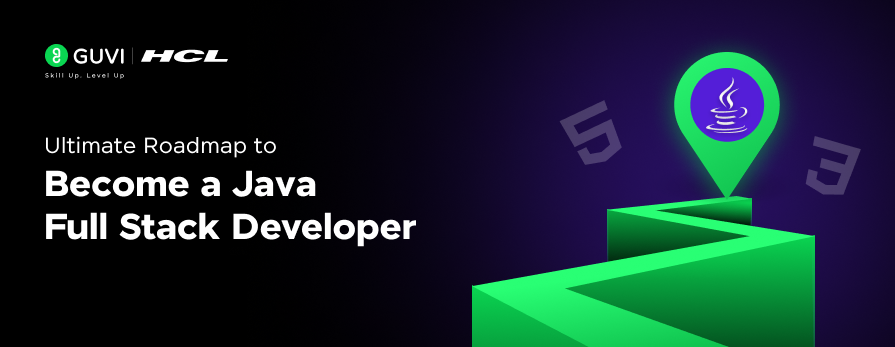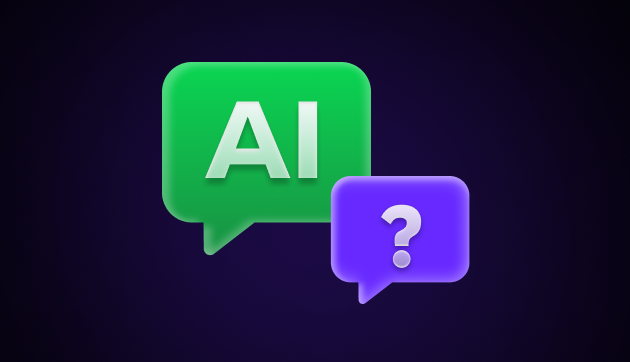
Ultimate Roadmap to Become a Java Full Stack Developer
Oct 09, 2024 3 Min Read 1925 Views
(Last Updated)
You might have heard of full stack developer but that is a broader term and to put it narrowly, there is a domain known as Java Full Stack developer where your major focus will be surrounding Java!
This article comprises of a roadmap that will guide you and help you become a Java Full stack developer with ease. So, without further ado, let us get started!
Table of contents
- Java Full Stack Developer Roadmap
- Phase 1: Learn the Fundamentals
- Phase 2: Master Java
- Phase 3: Database Management
- Phase 4: Back-End Development (Java Frameworks)
- Phase 5: Front-End Development
- Phase 6: Build RESTful APIs and Web Services
- Phase 7: Version Control and Collaboration
- Phase 8: Testing
- Phase 9: DevOps and Deployment
- Phase 10: Cloud Computing
- Phase 11: Soft Skills and Collaboration11.1 Agile Methodology
- Final Phase: Build Projects and Portfolio
- Conclusion
Java Full Stack Developer Roadmap
Becoming a Java Full Stack Developer involves mastering both front-end and back-end development, along with building knowledge in databases, DevOps, and system design. This roadmap will guide you step-by-step through the skills, tools, and technologies you need to master.
Phase 1: Learn the Fundamentals
1.1 Core Programming Concepts
Before jumping into Java, it’s essential to understand fundamental programming concepts.
- Basics of Programming: Variables, data types, control structures (if-else, loops), and functions.
- Object-Oriented Programming (OOP): Understand the four pillars (Encapsulation, Inheritance, Polymorphism, and Abstraction).
Phase 2: Master Java
2.1 Core Java
- Basic Java Syntax: Learn the basic syntax, variables, operators, and control structures.
- OOP in Java: Classes, objects, constructors, inheritance, interfaces, and polymorphism.
- Collections Framework: Understand Java collections like List, Map, Set, and their implementations.
- Multithreading: Learn about creating threads, thread synchronization, and concurrent programming.
- Exception Handling: Try-catch blocks, custom exceptions.
- File I/O: Learn how to read and write files in Java.
Resources:
- Book: “Head First Java” by Kathy Sierra.
- Online: Oracle’s official Java tutorials, Udemy, Coursera.
2.2 Advanced Java
- Generics: Parameterized types, working with type safety.
- Streams and Lambda Expressions: Understand how to work with streams for functional programming.
- JVM Internals: Understand how the Java Virtual Machine works, including garbage collection and memory management.
Phase 3: Database Management
3.1 Relational Databases (SQL)
- SQL Basics: Learn to create, read, update, and delete data using SQL.
- Joins and Aggregations: Understand how to combine data from multiple tables and perform data summarizations.
- Database Design: Learn about normalization, indexing, and relationships (one-to-one, one-to-many, many-to-many).
Tools:
- MySQL or PostgreSQL: Install and work with a relational database.
3.2 NoSQL Databases
- MongoDB: Learn how to work with NoSQL databases to handle unstructured or semi-structured data.
Phase 4: Back-End Development (Java Frameworks)
4.1 Java Servlets and JSP
- Java Servlets: Learn how to handle HTTP requests/responses using Servlets.
- JSP (Java Server Pages): Learn how to build dynamic web pages using Java code embedded in HTML.
4.2 Spring Framework
Spring is a powerful Java framework widely used for building enterprise-level applications.
- Spring Core: Dependency Injection (DI), Inversion of Control (IoC) principles.
- Spring Boot: Build stand-alone Spring applications with minimal configuration. Master the following:
- Creating RESTful APIs using Spring Boot.
- Handling HTTP requests and responses.
- Using annotations like @RestController, @RequestMapping, @GetMapping, etc.
- Spring Data JPA: Work with databases using ORM (Object-Relational Mapping). Learn how to use JPA and Hibernate.
- Spring Security: Implement security features like user authentication and authorization.
- Spring MVC: Understand how to build web applications with Spring’s Model-View-Controller pattern.
Resources:
- Book: “Spring in Action” by Craig Walls.
- Online: Spring’s official documentation, Udemy courses.
Phase 5: Front-End Development
5.1 Core Front-End Technologies
- HTML: Structure of web pages, elements, attributes, and forms.
- CSS: Styling web pages with CSS, including layouts (Flexbox, Grid), and responsive design using Bootstrap.
- JavaScript: Core programming language for front-end development. Learn how to manipulate the DOM, work with events, and handle asynchronous operations using promises and async/await.
5.2 Front-End Frameworks
- React.js: Learn how to build dynamic, component-based front-end applications using React.
- Components, JSX, props, and state management.
- Working with hooks and handling forms.
- Consuming APIs and rendering data on the UI.
- Angular: If you prefer Angular, learn about components, services, dependency injection, and how to work with Angular’s template syntax.
- Vue.js: A lightweight, approachable alternative to React and Angular for building front-end interfaces.
Resources:
- Courses: Udemy or FreeCodeCamp for hands-on practice with React, Angular, or Vue.
Phase 6: Build RESTful APIs and Web Services
6.1 REST API Design
- HTTP Methods: GET, POST, PUT, DELETE, PATCH.
- JSON: JavaScript Object Notation is the format used for API requests and responses.
- API Design Principles: Learn about versioning, statelessness, and RESTful principles.
6.2 API Implementation with Spring Boot
- Build a RESTful API using Spring Boot.
- Understand how to handle requests and responses, including validation and error handling.
- Integrate with databases using Spring Data JPA.
Phase 7: Version Control and Collaboration
7.1 Git and GitHub
- Git: Learn how to initialize repositories, stage changes, make commits, and use branching strategies.
- GitHub: Host your projects on GitHub and collaborate with others using pull requests and code reviews.
Phase 8: Testing
8.1 Unit Testing
- Learn to write unit tests using JUnit and Mockito for mocking dependencies.
- Understand how to apply the Test-Driven Development (TDD) approach.
8.2 Integration Testing
- Learn how to test the interaction between various components of your application.
- Use Spring Boot’s Testing module to test REST APIs.
Phase 9: DevOps and Deployment
9.1 Build Tools
- Maven/Gradle: Learn to manage project dependencies and automate the build process.
9.2 Continuous Integration / Continuous Deployment (CI/CD)
- Learn about CI/CD pipelines using Jenkins or GitLab CI.
- Automate testing, building, and deploying your application.
9.3 Containerization
- Learn Docker to containerize your Java applications.
- Understand how to create Docker images, work with Docker containers, and deploy applications in different environments.
Phase 10: Cloud Computing
10.1 Cloud Platforms
- Learn how to deploy Java applications to cloud platforms like:
- AWS (Amazon Web Services).
- Google Cloud Platform (GCP).
- Microsoft Azure.
10.2 Cloud Databases
- Understand how to use cloud-based databases like AWS RDS or Google Cloud Firestore.
Phase 11: Soft Skills and Collaboration11.1 Agile Methodology
- Learn Agile practices like Scrum and how to work in sprints.
- Use tools like JIRA or Trello to track progress and manage tasks.
11.2 Communication and Collaboration
- Work on improving your communication skills, which are essential for working in teams and collaborating with clients or stakeholders.
Final Phase: Build Projects and Portfolio
12.1 Full-Stack Projects
- E-commerce Platform: Build an e-commerce site with product listings, shopping cart, and payment integration.
- Blogging Platform: A platform with user authentication, where users can post, edit, and delete articles.
- Task Management Tool: Build a full-stack tool with user login, task creation, and real-time updates using websockets.
12.2 Portfolio Website
Create a personal website where you showcase your projects, skills, and experience.
In case, you want to learn more about Java Full stack development and how to become one, consider enrolling for GUVI’s Certified Java Full-stack Developer Course that teaches you everything from scratch and make sure you master it!
Conclusion
Becoming a Java Full Stack Developer is a journey that requires dedication, consistency, and hands-on practice. This roadmap provides you with a clear path to mastering the key technologies and skills needed to excel in both front-end and back-end development. Stay focused, build real-world projects, and keep learning!
































Did you enjoy this article?